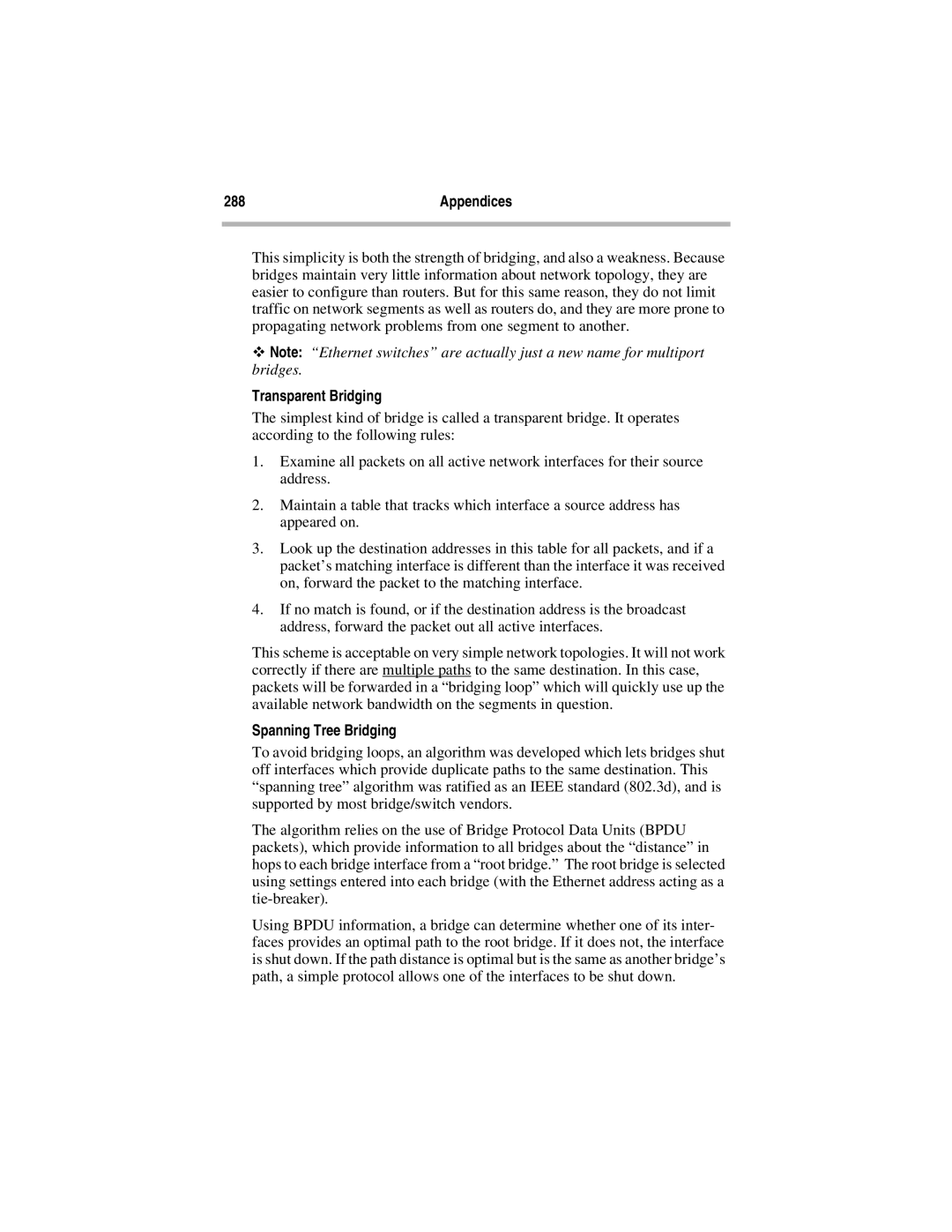288 | Appendices |
|
|
This simplicity is both the strength of bridging, and also a weakness. Because bridges maintain very little information about network topology, they are easier to configure than routers. But for this same reason, they do not limit traffic on network segments as well as routers do, and they are more prone to propagating network problems from one segment to another.
ϖNote: “Ethernet switches” are actually just a new name for multiport bridges.
Transparent Bridging
The simplest kind of bridge is called a transparent bridge. It operates according to the following rules:
1.Examine all packets on all active network interfaces for their source address.
2.Maintain a table that tracks which interface a source address has appeared on.
3.Look up the destination addresses in this table for all packets, and if a packet’s matching interface is different than the interface it was received on, forward the packet to the matching interface.
4.If no match is found, or if the destination address is the broadcast address, forward the packet out all active interfaces.
This scheme is acceptable on very simple network topologies. It will not work correctly if there are multiple paths to the same destination. In this case, packets will be forwarded in a “bridging loop” which will quickly use up the available network bandwidth on the segments in question.
Spanning Tree Bridging
To avoid bridging loops, an algorithm was developed which lets bridges shut off interfaces which provide duplicate paths to the same destination. This “spanning tree” algorithm was ratified as an IEEE standard (802.3d), and is supported by most bridge/switch vendors.
The algorithm relies on the use of Bridge Protocol Data Units (BPDU packets), which provide information to all bridges about the “distance” in hops to each bridge interface from a “root bridge.” The root bridge is selected using settings entered into each bridge (with the Ethernet address acting as a
Using BPDU information, a bridge can determine whether one of its inter- faces provides an optimal path to the root bridge. If it does not, the interface is shut down. If the path distance is optimal but is the same as another bridge’s path, a simple protocol allows one of the interfaces to be shut down.
